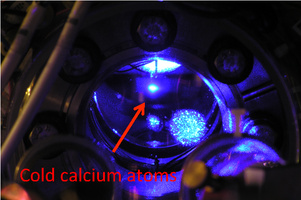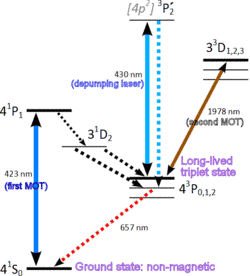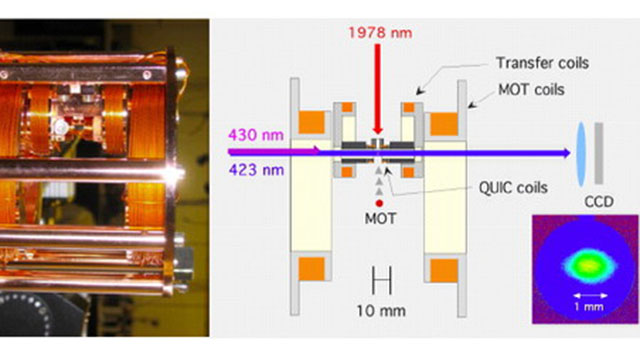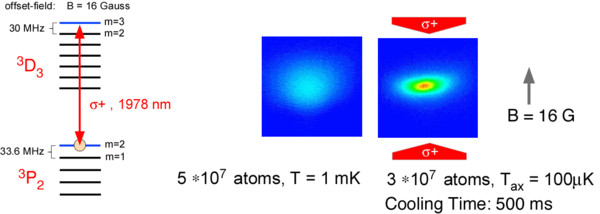Bose-Einstein condensation of alkaline-earth atoms
Torben Laske, Hannes Winter, Andreas Hemmerich
Introduction

Owing to their unique electronic properties, alkaline-earth-metal (AEM) atoms are at the forefront of several rapidly evolving lines of research in atomic physics. The existence of narrow intercombination lines connecting the non-magnetic singlet state to the triplet states render them highly useful as atomic frequency standards. These narrow transitions can also serve as novel precision tools for read-out and manipulation of quantum information in optical lattices or for the control of interaction strength in the quantum degenerate regime. Ultracold fermionic AEM samples trapped in optical lattices provide intriguing new possibilities for simulating electronic matter dominated by spin-orbit coupling. Bosonic AEM isotopes with singlet and long-lived metastable triplet states uncomplicated by hyperfine structure lend themselves for ultracold collision studies confronting theory at a fundamental level.

Unlike alkali atoms, bosonic 2-electron atoms like 40Ca, 88Sr, 70Yb, 72Yb, 74Yb, 76Yb have non-magnetic ground states. This precludes the application of sub-Doppler cooling techniques in magneto-optical traps (MOT) and evaporative cooling in magnetic traps in the ground state of these atoms. Research groups working on these species reach ultralow temperatures by operating ground-state MOTs by means of narrow intercombination transitions. This is combined with optical trapping using so called magic wavelength dipole traps, which permit equal light shifts for the two states connected by the narrow cooling line. In our group, we have devised a new approach towards cooling and optically trapping of 2-electron atoms, which avoids such complications. Out methods yields an increase of phase space density of four orders of magnitude. Subsequent evaporation allows us to form a Bose-Einstein condensate.


